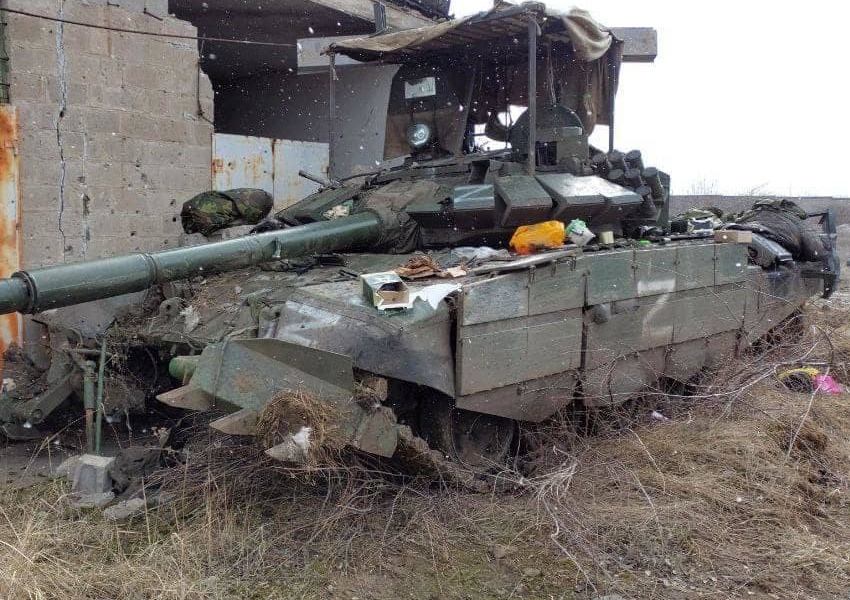How quickly can Russia rebuild its tank fleet? Report Economist

Analysis and insights into Russia's ability to build tanks. The point of the weekly The Economist
Russia has only one tank factory and is increasingly relying on the refurbishment of old models – writes The Economist . During WWII, the German military destroyed Soviet tanks at a phenomenal rate. But even though the Red Army lost 80,000 tanks, the industrial power of the Soviet Union allowed it to end the war with more tanks than it had at the beginning of the conflict.
Today tanks are much more sophisticated and expensive and are therefore used in much smaller numbers. However, in the war with Ukraine Russia, like the Soviet Union, lost a huge number of tanks. Ukraine claims to have destroyed more than 3,250. Oryx, an open-source intelligence blog, has documented 1,700 losses. The International Institute for Strategic Studies, a think tank, says about half of Russia's prewar stock of T-72s, which numbered about 2,000 and made up the bulk of its tank force, was destroyed.
Russia's tanks have failed to give it an advantage in Ukraine and its forces will struggle to carry out another major offensive without sufficient armored support. In recent weeks, Ukraine has secured tanks from its Western allies, which it will likely use in a spring counter-offensive. Russia will have to strengthen its fleet if it hopes to hold the conquered territory. Will he be able to replace the lost tanks this time?
In the 1940s Soviet factories could produce more than 1,000 tanks a month. Plants that made tractors and railroad engines were told to build tanks. Today it is more difficult to increase production. The electronics in modern tanks – for night vision, weapon aiming and a number of other functions – are very sophisticated. This makes production slower and means that many factories designed for other types of production cannot easily produce tanks. There is only one tank factory left in Russia – UralVagonZavod, a huge complex built in the thirties. But financial mismanagement and huge debts have slowed modernization. The workers joke that they assemble the tanks by hand. Novaya Gazeta, a liberal Russian newspaper, reports that the plant produces just 20 a month. A Western official told The Economist that, in total, demand for tanks by the Russian military exceeds production tenfold.
In an effort to meet demand, Russia has increased the pace of restoring old tanks, of which it has thousands in storage. In Ukraine, modern Russian tanks, such as the T-90, are now fighting alongside large numbers of T-72B3s, built decades ago but upgraded with guns, reactive armor (which reduces the chance of a hit penetrating the vehicle), and communications digital. Even with these improvements, older tanks are inferior to newer designs and less likely to survive a hit from Ukrainian forces, but are still serviceable. According to Russian media, UralVagonZavod rebuilds about eight tanks a month, and three other armored vehicle repair plants repair about 17 each. Two more plants of similar size are expected to come on stream in the coming months.
This means that while Russia is only able to build 20 new tanks a month, it may soon be able to salvage around 90 a month from its depots. But that wouldn't be enough to make up for the estimated 150 units they lose each month, according to Oryx's analysis. Additionally, production may be hampered by component shortages. Semiconductors, the computer chips that control modern tanks, are especially scarce. The European Commission says Russia is using chips from imported dishwashers and refrigerators in its military hardware. Some recently refurbished tanks in Ukraine contain a hodgepodge of hardware of different models and lack high-tech equipment, such as wind speed sensors, that allow for accurate firing.
Russia is not alone in these problems. Ukraine and its allies also lack the ability to produce tanks quickly. Ukraine's only tank factory, near Kharkiv, was destroyed early in the war. America, which has promised to send 31 M1A2 Abrams tanks to Ukraine, has only one factory, with a capacity to produce 15 tanks a month. Production elsewhere in the West is similarly slow, which has led to a rush to find old tanks to donate. But in general, attacking forces use more tanks than defenders. As the conflict progresses, Russia is likely to see its fleet steadily shrink in both quantity and quality. This time, production may not save her.
(excerpt from the foreign press review by Epr Comunicazione)
This is a machine translation from Italian language of a post published on Start Magazine at the URL https://www.startmag.it/smartcity/quanto-velocemente-la-russia-puo-ricostruire-la-sua-dotazione-di-carri-armati-report-economist/ on Sat, 11 Mar 2023 06:19:51 +0000.
